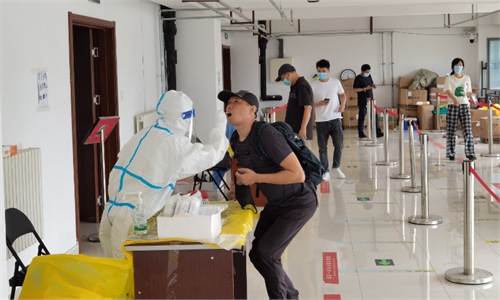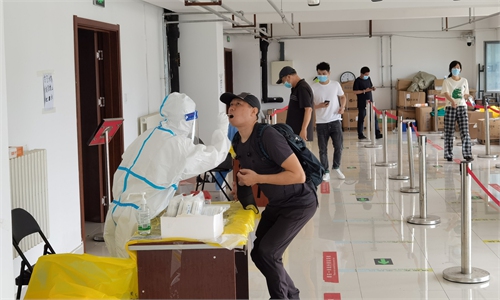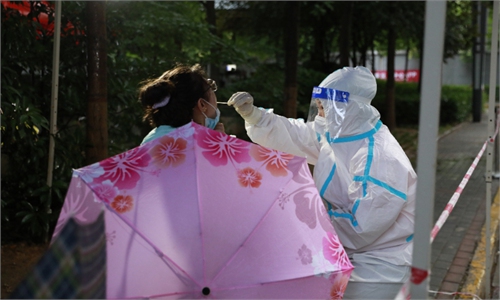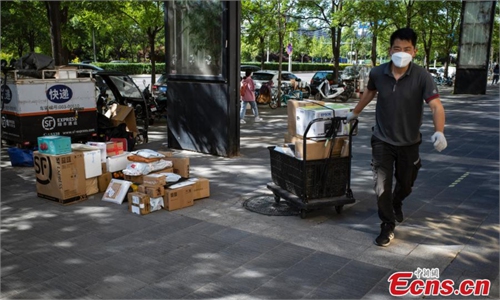Beijing’s govt and public institutions should be placed under temporary lockdown after detection of COVID case: guideline
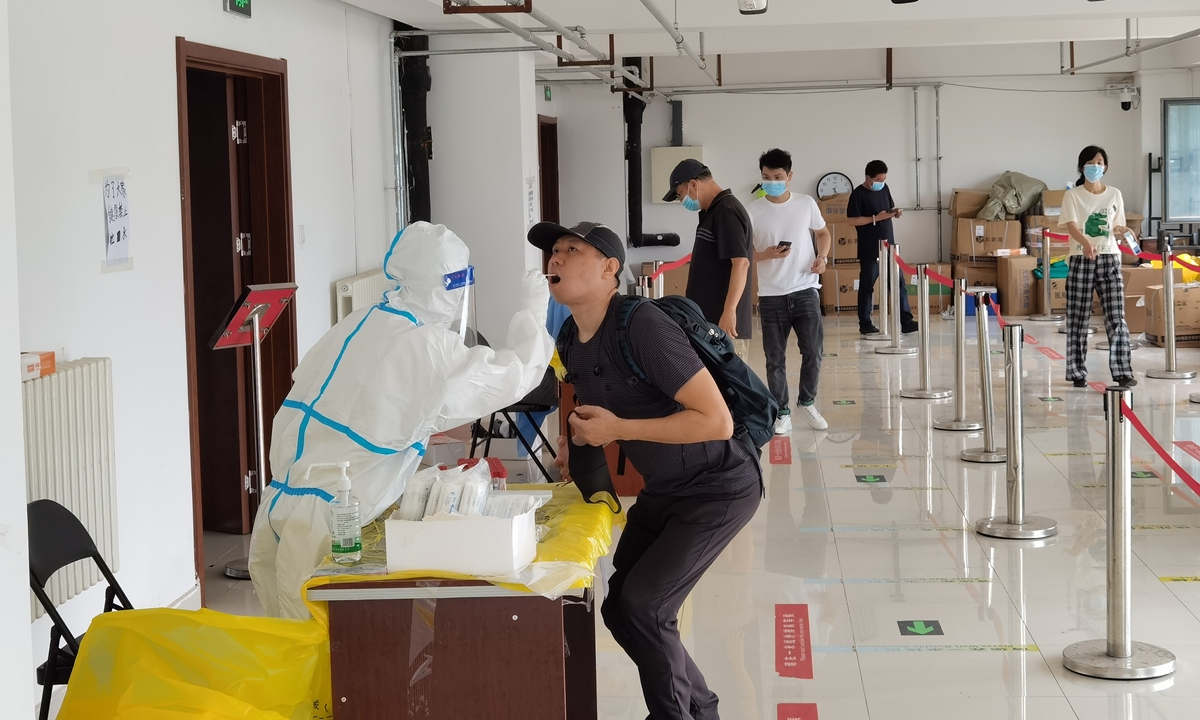
Residents from Shijingshan district in Beijing take nucleic acid tests on July 6, 2022. Photo: IC
Beijing's government departments and public institutions should be immediately placed under temporary closed management when confirmed COVID-19 cases, asymptomatic infections, close contacts and other epidemic-related situations are reported, according to a guideline issued by Beijing health authority.
According to the latest guideline for emergency response to COVID-19 for public institutions and government departments released by the Beijing Center for Disease Prevention and Control, the temporary closed management means all the personnel will be restricted from leaving these places and their range of activities will be limited.
The guidelines stipulate that temporary quarantine and observation rooms have to be set up to isolate the confirmed patients, silent carriers, close contacts and contacts of close contacts before they are transferred to designated medical institutions or centralized quarantine sites.
Besides, temporary lockdown measures have to be instituted immediately with all the personnel restricted from leaving and their activity range limited.
A thorough screening and comparison of the information of the personnel has to be conducted with the number and information of permanent personnel, visitors and key groups to be verified.
Meanwhile, the staffers need to be pacified and communication and direction on mental health have to be conducted.
These institutions and government organs have to organize the staffers to cooperate with the disease prevention and control department in the epidemiological investigation and comply with the centralized quarantine, home observation and nucleic acid testing measures.
The related departments of the institutions and organs also have to master the conditions of the personnel, follow their health conditions and report in a timely manner if any abnormality occurs.
The guideline also stressed the ventilation, disinfection and nucleic acid sampling of the environment in terms of the handling of the environment of the venue.
The guideline also suggests the institutions should decide whether to take measures such as lowering the attendance rate, practicing closed-loop management or suspending operation or production or not according to the actual situations based on the results of onsite epidemiological investigations and risk assessments.
Global Times
